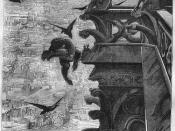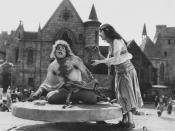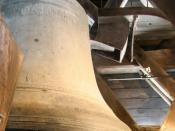The Hunchback of Notre Dame has taken on several forms since the publication of Victor Hugo's novel Notre Dame de Paris in 1831. Quasimodo, the name itself meaning "half-formed," is the misshapen, misunderstood hunch-backed bell ringer of the Notre Dame Cathedral in 15th Century France. The character has been brought to life on the movie screen many different times from the 1930's through to the 1990's. Charles Laughten played the disfigured character in a 1939 Pandro S. Berman production of Hugo's novel, Anthony Hopkins gave us his version in the 1980's, and Don Hahn produced Walt Disney's version of Quasimodo in 1996, to name a few. From the 1930's to the 1990's, the character incurred many alterations to satisfy current audiences. Berman's Quasimodo underwent many changes to become a Walt Disney character in the 1990's, all of which followed a general trend. Quasimodo was moulded and transformed into a character with whom young children everywhere could relate.
The history of Quasimodo was rewritten in the fast paced Disney version to invoke sympathy from the audience and allow them to relate to him. In the 1939 version, the baby Quasimodo was abandoned on the doorstep of the Cathedral, to be found and raised alone in the bell tower by Judge John Frollo, the cold and heartless brother of the Archdeacon. Quasimodo was not wanted from the beginning and his lack of family, beyond his master, distances him from the viewers. The modern cartoon rewrites this unhappy beginning by introducing Quasimodo's mother as a beautiful young gypsy woman who died at the hands of Frollo to save her son's life. The fact that Quasimodo was actually loved desperately by his mother invokes sympathy in the viewer which leads to a deeper connection with the deformed orphan.
The Walt Disney character of Quasimodo...


